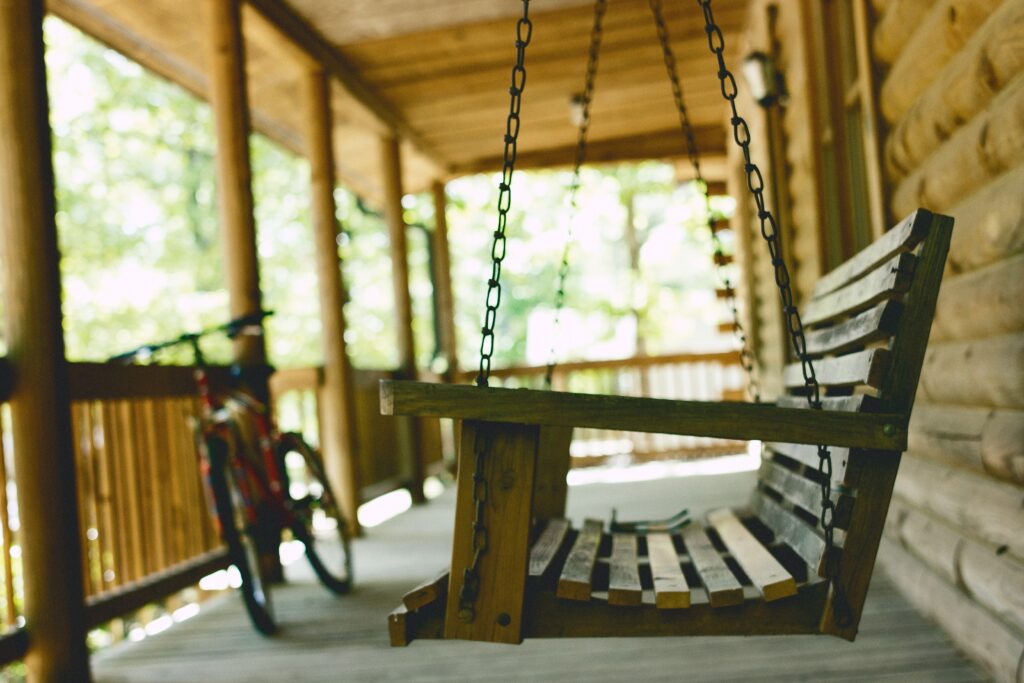Today, we’re diving into the enchanting world of primitive furniture, a style of decor that has captured the hearts of many. With its handcrafted appeal and deep-rooted connection to history, primitive furniture is an excellent choice for adding a touch of warmth and personality to any living space. So, if you’re wondering what primitive furniture is, you’ve come to the right place!
A Peek into Different Types of Primitive Furniture
What exactly is primitive furniture, you ask? Great question! “Primitive” refers to hand-made furniture, often by people who weren’t trained craftsmen. It also refers to furniture styled to look like these primitive pieces. People crafted these pieces using simple tools and techniques, resulting in rustic furniture that has a folk art quality. Early American settlers, for example, made country furniture using available materials, like willow trees or other local resources.
Let’s look at some of the most popular types of primitive furniture.
Country or Rustic Furniture
This type of primitive furniture is typically made from wood, such as pine or oak, and features a rough-hewn, handmade appearance. The designs often include simple carvings, distressed finishes, or repurposed elements that evoke a feeling of nostalgia. Common examples of country furniture include farmhouse-style dining tables, benches with hand-painted designs, and cupboards adorned with folk art or whimsical patterns.
Colonial Furniture
Popular in the late 17th to early 19th centuries, this style leans towards a more formal aesthetic, showcasing the skills of early American craftsmen. This style is exemplified by pieces like high-backed chairs, chests with intricate carvings, and desks with detailed joinery techniques. Colonial furniture often incorporates elements of European design, such as Chippendale or Queen Anne influences, which settlers adapted to local materials and craftsmanship.
Native or Tribal Furniture
This category encompasses furniture created by indigenous peoples around the world. Artists craft these unique pieces using locally sourced materials, such as natural fibers, animal hides, or clay. Examples of native or tribal furniture include African carved stools, Native American woven baskets, and South American pottery used for storage. The designs of these pieces often hold cultural significance, telling stories or representing beliefs held by the creators.
Scandinavian Primitive Furniture
Originating from Northern European countries like Sweden, Norway, and Finland, Scandinavian primitive furniture is characterized by its simplicity, functionality, and focus on natural materials. Traditional pieces may include wooden chairs with woven seats, simple storage chests, and rustic tables made from locally sourced wood. Light-colored wood, such as pine or birch, is commonly used to create a bright and airy feel.
Asian Primitive Furniture
Asian primitive furniture has a distinct style, focusing on clean lines, minimalism, and functionality. Crafted from wood, bamboo, or other local materials, these pieces often feature intricate joinery techniques and a harmonious balance between form and function. Some examples include Japanese tansu chests, Chinese wooden benches, and Indian-carved wooden screens.
As you can see, primitive furniture offers diverse styles and designs, each with unique charm and appeal. These pieces are perfect for adding character and history to your home, no matter your preferred decorating style.
Traditional Techniques and Craftsmanship
Handcrafted furniture isn’t just about the materials. It’s also about the techniques and craftsmanship that go into each piece. Primitive furniture makers used hand tools like saws, planes, and chisels, which allowed them to create pieces with a level of detail and character that’s hard to replicate with machines. Joinery techniques, like mortise and tenon, dovetail, and pegged joints, were also used to ensure the furniture was sturdy and long-lasting.
Primitive furniture makers used surface treatments to add personality to their creations. Painted finishes, stains, and oils were all used to give each piece a unique appearance. Sometimes, the furniture was intentionally distressed or aged to create a sense of history and character.
Integrating Primitive Furniture into Modern Homes
So, how can you bring the charm of primitive decor into your own home? One of the benefits of using primitive furniture is its sustainability. Accordingly, by choosing a handcrafted piece, you’re supporting traditional craftsmanship and reducing waste from mass production. Each primitive piece has its unique character, making it a perfect focal point for any room.
To successfully integrate primitive style into your home, try mixing styles and materials. For example, a rustic wooden table with modern metal chairs can look great, or an Early American chest can be used as a statement piece in a contemporary living room. Another strategy is to use primitive furniture as accent pieces – a handwoven basket or a primitive-style tea or coffee set can add a touch of warmth and personality without overwhelming the space.
Here are some examples of successful integration.
Farmhouse Style
This decorating style naturally fits primitive furniture, emphasizing warmth, comfort, and a connection to the past. To create a cozy and inviting atmosphere, incorporate country furniture, like a rustic dining table or a wooden bench.
Eclectic Design
If you enjoy mixing and matching different styles, try incorporating a few primitive pieces into your eclectic space. The unique character of handcrafted furniture can provide a striking contrast to more modern pieces. This creates a visually interesting and dynamic room.
Modern Rustic
This style combines the clean lines and minimalism of modern design with the warmth and texture of rustic elements. Use primitive decors, such as a hand-carved wooden mirror or a woven rug, to add a touch of natural beauty to your sleek, contemporary space.
The Timeless Appeal of Primitive Furniture
Primitive furniture has a timeless appeal, making it a popular choice for many decorating styles. Its handcrafted nature, unique character, and connection to our past remind us of the value of preserving and appreciating traditional craftsmanship. By incorporating primitive furniture and decor into your home, you’re creating a warm and inviting space and celebrating the history and artistry that went into each piece.
So, next time you’re browsing for a new piece of furniture, consider looking for a primitive piece that speaks to your heart. It might add the perfect touch of warmth, charm, and history to your home.
Looking to add primitive style to your home?
You can view our beautiful selection of hand-crafted bedroom furniture by visiting Brandenberry Furniture. If you’re visiting Shipshewana, stop in at our ‘brick and mortar’ store. Talk to our expert customer service staff about creating custom-made furniture for your home and lifestyle.


